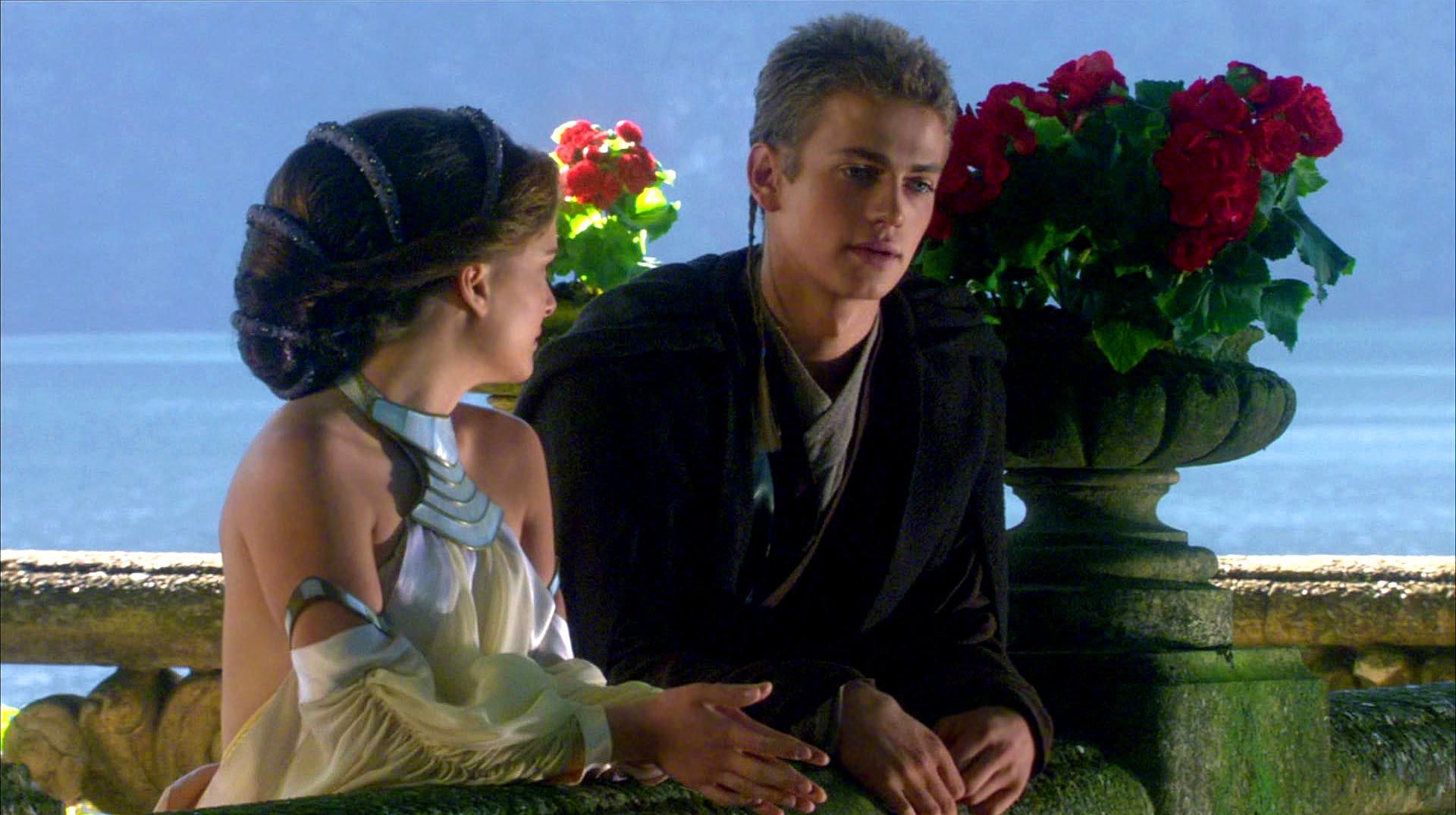The Star Wars prequels have attracted so much hate for so many years that it's now become almost fashionable to find reasons to love them. Characters, scenes and dialogue that were once ridiculed mercilessly are mined for positive interpretations, and the infamous "I Hate Sand" scene from 2002's Star Wars: Attack of the Clones is no exception.
A recent post gaining traction on Reddit examines what's secretly great about the scene, which depicts Anakin Skywalker, then a Padawan, connecting with the love of his life, Padme Amidala. In opening up to her, he clumsily confesses, "I don't like sand. It's course and rough and irritating and it gets everywhere." The peculiar dialogue attracted criticism both for the awkwardness of the line itself and its stilted delivery by actor Hayden Christensen.
But what if the awkwardness is all part of developing Anakin's character? The generous interpretation of the scene justifies Anakin's inability to express himself sincerely and emotively with his history as a Padawan. Jedi are forbidden, emphatically, from experiencing powerful emotions.
The monkish existence of the Jedi is intended to tame one's passions and undergo the discipline necessary to stifle them. Anakin joined the Jedi at an early age, yet still later than most Jedi typically do, and by the time of the scene in question he is a hormonal teenager experiencing the full force of his emotions for the first time. Torn between his budding feelings for Amidala and the trauma of his past, the admission that he hates sand is actually a startling development for the character.
Sand, of course, is representative to Anakin of his home world, the desert planet Tatooine. Born into slavery and poverty, it makes sense why Anakin would feel the way he does about any reminders of his home world. His infamous admission to Amidala represents a coming to terms with his need to express himself and feel the emotions the Jedi have forbidden him, and as such is a major turning point for the character.
Throughout the rest of the prequels, Anakin eventually gave in to his passions and embraced the Dark Side to become Darth Vader. In order to lead him down that path and not make that change feel completely out of left field, the film needed to push Anakin in that direction by little steps. Detailing his hatred for sand, however awkward and angsty it may be, is actually a brilliantly subtle way to depict Anakin's attraction to the Dark Side.
From a certain point of view, of course. What the recent trend toward exalting parts of the prequels that were previously mocked represents is a fandom's willingness to engage with the canon of their choice fully and completely. Rather than distancing themselves from aspects of the franchise's history that they don't like, many fans find themselves increasingly attracted to applying interpretive lenses and thus find diamonds in the rough.
It's easy to be critical of most anything, and to disregard it as silly or rote. What is far more difficult is to look for the value even in the underappreciated. Whether it's reading in an epic unseen battle of the Force in the duels of the original trilogy that seem as stilted as Anakin's dialogue, or it's designing a theory whereby Jar Jar Binks is secretly a Sith Lord puppeteering the galaxy, Star Wars fans prove time and again their ability to celebrate and appreciate every aspect of their universe. Sometimes the process is course and rough, but when you're looking for something to appreciate you'll find that it's everywhere.


